Resources
Blog

Battery C-Rate Explained: How to Power Your Tools Safely & Efficiently
In this section, we introduce the concept of a battery’s C-rating, explaining how it translates capacity (Ah) into safe charge and discharge currents. Understanding C-rating is critical for high-load or fast-charging applications.

What Should You Know About 18650 Battery Voltage?
In this blog, we explain why understanding 18650 lithium‑ion battery voltage is crucial for safety, performance, and longevity—helping you make informed design and maintenance decisions for your battery packs.
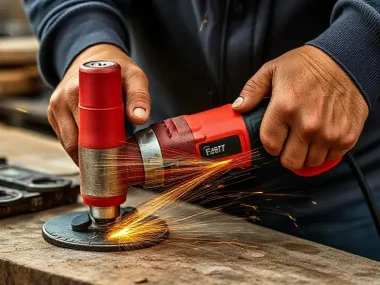
Lithium‑Ion Batteries: What’s the Difference Between Voltage and Amperage?
In this section, we introduce why understanding the distinction between voltage (electrical potential) and amperage (current) in lithium‑ion batteries is vital for both safety and efficiency when selecting and using batteries.
Effective battery use depends on matching both voltage and current ratings to your application.
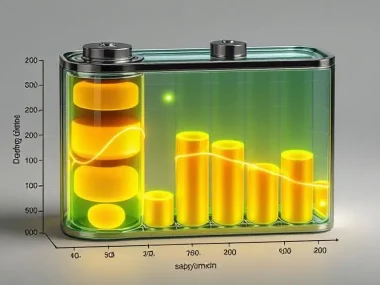
How to Choose a Long‑Lasting Battery for Power Tools: Energy Density Explained
In portable power tools, energy density—the amount of energy stored per unit of weight (Wh/kg) or volume (Wh/L)—is the single most important metric for maximizing runtime without making your tool unwieldy. This guide explains why focusing solely on amp-hours (Ah) can lead to selection mistakes and shows you how to pick a battery that truly lasts.
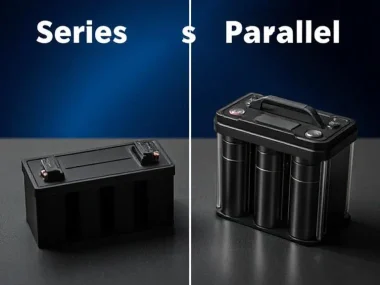
Batteries in Series vs. Parallel: Which Is Better?
In this blog, we outline the core differences and use cases for wiring batteries in series versus parallel—helping you understand how to trade off voltage and capacity for your application.

IMR, ICR, INR & IFR 18650 Batteries Decoded: Safety, Performance & Myths
In this section, we explain why decoding the four major 18650 chemistries (IMR, ICR, INR, IFR) is vital for optimizing device runtime, safety, and battery longevity. Understanding these distinctions prevents performance losses and mitigates hazards.

2×4.0 Ah vs. 1×8.0 Ah Battery Pack: Which Is Better?
This guide compares two 4.0 Ah batteries in parallel versus a single 8.0 Ah pack—evaluating runtime, weight distribution, charging convenience, and cost to help you choose the ideal configuration for your tools.

Vacuum Cleaner Batteries: The Ultimate Guide to Lifespan, Safety & Savings
This guide explains the critical role of rechargeable batteries in cordless vacuum cleaners—impacts on run time, suction performance, and overall user convenience.
Helps you choose the right battery type, monitor charge status, follow best care practices, and responsibly dispose of packs at end-of-life.
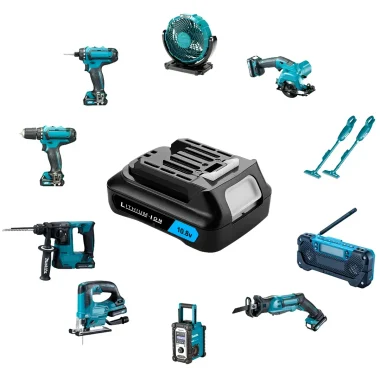
Cordless Vs. Corded Power Tools: Which Is Right For You?
Choosing between corded and cordless power tools depends on your workflow, mobility needs, and budget. This article helps DIYers, professionals, and outdoor enthusiasts select the right tools by comparing performance, cost, and convenience.

Extend Garden Battery Life: Avoid These Common Costly Mistakes
In this article, we outline the seven most common battery usage mistakes and explain how correct handling can extend your garden tool battery life and save you money.

18V Makita 8.0Ah Battery Comparison: OEM vs. Aftermarket
The article compares Makita's 18V 8.0Ah OEM batteries with aftermarket alternatives. While OEM batteries offer guaranteed compatibility, reliability, and long lifespan, they come with a higher price tag. Aftermarket batteries, however, provide a more affordable option without compromising much on performance, especially when certified with international standards like IEC, CE, RoHS, and UN38.3. Aftermarket batteries, such as XNJTG, use advanced 21700 cells that offer better energy density, providing longer runtime and stable performance. They also feature superior thermal management systems, reducing the risk of overheating. XNJTG batteries are more cost-effective, with a longer lifecycle and up to 600 charge cycles compared to 500 for OEM batteries. These batteries also come with a 1 year warranty and meet safety standards, ensuring protection against overheating, short-circuiting, and fire. For budget-conscious users, XNJTG offers a solid alternative to the high-priced OEM options, delivering similar or better performance at a lower cost.
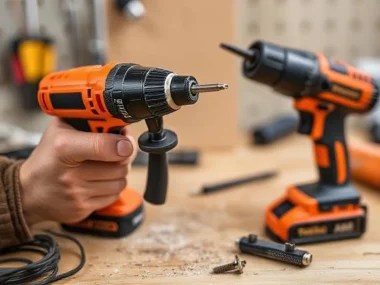
Diagnosing & Repairing Common Power Tool Issues: Keep Your Tools Running Like New
In this section, we explain the importance of quickly diagnosing common power tool faults and how this guide helps you safely and cost-effectively repair minor issues before they become major problems.
Timely detection and repair can extend tool life, reduce maintenance costs, and ensure safe operation.
Let our battery power your success
Transform your path to success with our advanced battery technologies, while enjoying the perks of free technical guidance and tailored design services to meet your unique requirements.